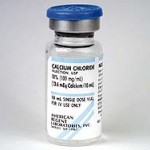
I rank Toradol 27 out of the 33 drugs I carry.
First, let me say, I am a huge proponent of pain management. As a member of the committee that writes our regional guidelines, I fought for an alternative to morphine for those patients in pain who were allergic to mophine. The first result was Toradol. Later, we secured Fentanyl. The Fentanyl, however, hasn’t yet shown up in our controlled substances kits, although I am told it is coming. As with any change to controlled substances, each change requires DEA approval and must work its way administratively through both hospital, pharmacy, and DEA heirarchies and back and forth until the policy is set in stone. I know this because it took a year to get Fentanyl in the kits of one of the paramedic services I oversee. When Fentanyl arrives in my kit, it will likely be ranked quite high on my list and push Toradol down even further, possibly to the point where we will have no need to carry it.
Toradol requires on-line medical orders for us to use. And there are some doctors who will never let us use it. Their vieww is there are just too many possible side effects, particuarly in elderly patients to give the drug without having an ED doctor first examine the patient and do a set of labs. The patient may have some degree of renal failure or, if they are a candidate for surgery, Toradol can interfere with their clotting.
The ideal patient for Torodal is probably a thirty-five-and under-year-old otherwise healthy adult who is presenting with kidney stones. Yet on a number of times I have called for permission to use it for patients with apparent kidney stone flank pain, I have been denied and told to just use morphine. All told I think I have only gotten permission to use the drug 3 times. Only once did I use it for someone who was allergic to morphine — an older woman who had broken her shoulder. I called and got orders, gave the drug and it worked quite well. The other two times were for kidney stones and I gave the Toradol along with morphine, again with positive results. If I think a patient has kidney stones I will always call for Toradol even if I think there is a good chance they will turn me down. I don’t take it personnally.
***
Ketoraloc Tromethamine (Toradol)
Class: Non-steroidal Anti-inflamatory (NSAID)
Action: Analgesic, anti-inflammatory, and anti-pyretic via inhibition of prostaglandin synthesis
Indication: Moderate to severe pain, especially renal colic (kidney stones)
Contraindications:
Hypersensitivity to ketorolac, aspirin or other NSAIDS
Age <1 year old
History of peptic ulcer disease, gastrointestinal bleeding or perforation
Advanced renal impairment
Hypovolemia
Cerebrovascular bleeding
Any patient at high risk of bleeding
Late pregnancy, active labor or nursing mothers
Patients currently receiving aspirin or NSAIDs
Precautions: Patients ? 65 years of age or less than 50 kg
History of renal disease
Dehydration
Pregnancy class C
Side Effects:
Can cause peptic ulcers, gastrointestinal bleeding and/or perforation
May precipitate renal failure in patients w/ dehydration or renal impairment
Nausea (12%)
Dyspepsia (12%)
Headache (17%)
Drowsiness (6%)
Adult Dose:
Patients <65 years of age:
One dose of 30 mg Slow IV or Deep IM
Patients ? 65 years of age, renally impaired and/or less than 50 kg (110 lb)
of body weight:
One dose of 15 mg Slow IV or Deep IM
Pediatric Dose:
One dose of 0.5 mg/kg up to a maximum of 30 mg Slow IV or Deep IM

